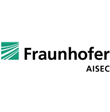Below is the 6th quarterly newsletter from the SAIL project. A printable, PDF, version of the SAIL newsletter #6 can be downloaded here.
You can subscribe to the quarterly newsletters from SAIL by entering your email address in the form below.
————————————————————————————————————————————————-
SAIL Project Newsletter, issue #6 – April 2012
Editor: Luis M. Correia
1. Editorial
This year, spring and blooming nature in countries of the northern hemisphere is synchronised with spring and blooming of results in the SAIL project. With less than the time it takes to make a baby left to the project, we are entering an intense phase of project result dissemination where everything that has been cooking inside the project is about to be brought into the light. NetInf (WP-B) are now proud parents of a the new born nilib, a package consisting of different implementations of namecontent binding validation algorithms for the NI URI format that SAIL members published earlier. nilib also contains additional protocol and NetInf router/client implementations and can be found at http://sourceforge.net/projects/netinf.
As in families, the birth of a child is though just the beginning of a life-time adventure. It is the responsibility of the parents to cater for that the coming generation get a good start in life and are fostered to continue developing what their ancestors invented. In SAIL, we take that responsibility seriously and as a sign of that our Summer School for students, post-docs and researchers will be the place for us to explain, in depth, our view of their Future Internet. Take the chance to read more about the Summer School in this newsletter, and why not book the week of 25th June for attending in person in beautiful Santander, Spain?
An aspect of growing older is that with age comes wisdom, at least if you manage to keep your senses open and receptive to what is happening around you. If you do not do that, your wisdom would likely be perceived as stubbornness. For our project, we intend to interact with other close relatives at similar stage of life through a series of workshops. At FuNeMS, in Berlin in July, for instance, there will be a Cloud Networking workshop co-organised by SAIL and three other FP7 projects. About a month later in Helsinki, there will be a second ACM SIGCOMM workshop on Information-Centric Networking, co-organised by us and renowned expert from the international network research community.
As you can see, even if that getting out of the winter, SAIL has not hibernate. All of this you can read more about further down…
Thomas Edwall (Project Manager)
Benoit Tremblay (Technical Manager)
2. Under the Spotlight:
Focus on SAIL Summer School
SAIL Summer School Future Internet explained – today!
The SAIL project has been already running for more than one year and a half. During this time, we have been able to acquire a wide knowledge on the Future Internet and some of its most important barebones. Although a large number of dissemination activities have been carried out, most of them consisting on the presentation of project results in different conferences, journals, etc., the SAIL Summer School now gives the opportunity to students and researchers to get a unique insight about the latest research aspects and trends of this fascinating subject.
Between June 25th and 28th, some of the people working in the SAIL project will offer in Santander (Spain) a complete view of some of the key concepts of the Future Internet. In particular, they will cover topics such as Cloud Networking, Network Virtualisation, Network of Information and Open Connectivity Services. The detailed programme is shown in the table below. All the lectures will be carried out by top researchers in these areas.
The venue of the Summer School, Santander, is a northern Spanish city which, besides providing an outstanding backdrop for the event, is becoming one of the most advanced and broad Internet of the Things (IoT) living laboratory. In this sense, the already interesting program will be complemented by two keynotes, which are somehow related to the Smart City paradigm that Santander is fostering. Mikael Eriksson (Ericsson Consumer Lab, Sweden) will talk about the upcoming Networked Society challenges and possibilities, while Prof. Luis Muñoz (Technical Manager of SmartSantander – VII Framework flagship project on experimental IoT platforms) will close the Summer School, by giving a talk on the role that smart cities and IoT may have on the Future Internet.
In addition to all the lectures, including a hands-on session, with exercises and challenges to be handled by the attendees, the Summer School will also incorporate within its program a Work-in-Progress session, in which Ph.D. students will have the opportunity to discuss with colleagues, on an open and flexible environment, their research on any topic related to the Future Internet. An award will be given to the best contribution, considering both its technical merit and the presentation.
From here, we encourage everybody to take the opportunity to get the latest insights about the Future Internet, while enjoying an appealing social program within a fantastic landscape. We are looking forward to seeing you all in Santander. The registration is open until May 31st, 2012.
For all the detailed information about the SAIL Summer School, visit www.sailproject.eu/summerschool.
3. Inside SAIL:
News from WPs and Themes
WP-A Impact and Collaboration Enabling (ICE)
The work is proceeding around socio-economics, as well as standardisation and migration, aspects. These are crucial in order to create and anchor the impact of SAIL results in a wider scope. Together, these areas will support the efforts to get SAIL solutions implemented across the “live” Internet.
We also decided extend the SAIL presence to Facebook, in addition to our presence on LinkedIn, Twitter, Youtube, Slideshare and Google+. Why? Well, Facebook is after all a social network used by many people across the world, and you might not be an exception. By liking SAIL on Facebook you will get updates from us right into your Facebook feed, so you don’t need to look for it elsewhere.
WP-B Network of Information (NetInf)
WP-B is developing the Network of Information, an Information-Centric Networking (ICN) architecture with a focus on support for heterogeneous technological and administrative domains. SAIL partners and collaborators have recently updated the specification of the NI scheme for “Naming Things with Hashes” in two Internet Drafts: draft-farrell-decade-ni and drafthallambaker-decade-ni-params. The specifications have been extended to include support for different representation formats of NI names, including a binary format (intended for
constrained environments and packet-level communications) and a human-readable format.
SAIL has recently released parts of the NetInf ICN software as open source. The package consists of different implementations of namecontent binding validation algorithms for the NI format and additional protocol and NetInf router/client implementations. The software, available at https://sourceforge.net/projects/netinf, is licensed under Apache-2.0. It includes implementations from multiple SAIL partners in the C, Ruby, Python, Java, PHP, and Clojure programming languages.
These software components are being used for experiments and prototyping activities within SAIL. For example, SAIL is currently developing a testbed for NetInf experiments in a so-called “Event with Large Crowd” scenario - a challenging ICN scenario with a high demand for content in a geographical scope, involving node mobility, intermittent connectivity and caching/rendezvous services provided by network infrastructure. The prototype components include mobile terminals, in-network caching, name resolution services and NetInf routers.
ICN as a networking research topic is gaining traction fast. There was an ICN side meeting at IETF-83 with many interesting presentations and discussions. There was an Emerging Design Choices in Name-Oriented Networking Workshop at Infocom-2012, and there will be a SIGCOMM-2012 workshop on Information-Centric Networking. Moreover, there is currently an open call for papers for a Elsevier Computer Communications Journal special issue on ICN – we are looking forward to your submission.
WP-C Open Connectivity Service (OConS)
OConS mechanisms range from the access to the core networks, from the physical to network and transport layers; thus, the OConS mechanisms introduced in Deliverable D.C.1 “Architectural concepts of connectivity services” (available at http://www.sail-project.eu/deliverables) have to be orchestrated in the most appropriate manner for any given use-case.
Within the overall SAIL flash crowd scenario, and to support the NetInf and the CloNe approaches, OConS is focussing on a couple of use-cases related with these novel networking paradigms. Accordingly, we take as input the requirements from NetInf or, respectively, CloNe, and based on a specific communication context we configure, instantiate, and use (i.e., orchestrate) the appropriate combination of OConS mechanisms to offer the requested connectivity services. Thus, we are currently dedicating our efforts to the design of OConS Orchestration functionalities and procedures, to the specification of the Data Model with its necessary abstractions, and to the definition of the Interfaces and their messages.
Concerning prototyping activities, capitalising on the successful demonstration of several OConS mechanisms during the SAIL meeting last January, we are now going a step further and prepare the prototype integration plan. This document aims at investigating and describing the way several prototyped mechanisms are supposed to work together, showing the benefit of the orchestration of OConS mechanisms, and fostering the cross-WP cooperation around two use-cases, NetInf and CloNe.
WP-D Cloud Networking (CloNe)
WP-D is developing an architecture for Cloud Networking utilising the flash network slices concept. This includes appropriate interfaces, and a reference model that spans multiple heterogeneous providers, including multi network operator for providing on-demand computing, storage and networking via a unified interface. A public demonstration of prototyping activities is being prepared for FuNeMs 2012.
This demonstration includes multiple aspects, like definition and description of virtual infrastructure and FNS via a graphical user interface for end users, which then proceeds to decomposition of this virtual infrastructure into individual domain specific resources that are then connected together via a distributed control plane/protocol. Functional aspects in the actual system include configuration negotiation, configuration and connection of different networks, resource management and application deployment. This happens over a test bed spanning Europe with individual sites spread over Stockholm, Sweden (EAB), Aveiro, Portugal (PTIN), Paris, France (IT), Bristol, UK (HP) and Lyon, France (Lyatiss).
The demonstration involves the deployment of an actual distributed service, in this case an ecommerce application. An e-commerce web server and application is implemented, simulating a real life scenario when the business owner has a web server in Sweden and decides to extend its business to France, Portugal or UK. It demands infrastructure and FNS specifying the location and other necessary properties. After deploying the infrastructure and FNS, the client ecommerce front end is deployed in newly created VM in the remote site and it can be accessed by any client via a public IP address. The architecture work brings all these elements as well as the gained expertise from prototyping to refine the initial architecture and document it in the next public deliverable.
The CloNe architecture will be detailed at a conceptual level. Technologies for implementing components and functions of a CloNe system will be presented to demonstrate implementation of the architecture.
Prototyping and Experimentation Theme
After the successful internal demonstration and prototyping workshop in Lisbon, Jan. 2012, the Prototyping Theme entered the next phase in preparing the framework for the project-wide demonstration activities and the public demonstration and show-case events. The description of the planned demonstration scenarios, and the cross-WP cooperation is currently under discussion, will be published shortly in Deliverable DA.9 “Description of overall prototyping use cases, scenarios and integration points”. In the meantime, NetInf and OConS, as
well as CloNe and OConS, have discussed the opportunities for common use cases on a bilateral basis, and have intensified their cooperation on the integration points.
Security Theme
VXDL is a high-level language for describing dynamic virtual infrastructures supported by the VXDLForum (http://vxdlforum.org). It aims at providing a simple but efficient way for virtual infrastructures’ users and providers to describe the object of their interactions.
The extensions of VXDL carried out in the security theme of SAIL are focused on security aspects, enforcing two main points: the definition of which management operations are permitted to whom on the resources the infrastructure is comprised of, and the ability to define hierarchical security zones and permitted network connections between them.
Network Management Theme
The Network Management Theme has been investigating several specific items pertaining to management between WPs. One key item is the qualitative analysis of different architectural design options to be used for implementing resource management for both OConS and CloNe. Fig. 2 illustrates three out of many viable options, each of which is modelling differently which entity is the authority in managing available network, computing, and storage resources.

Fig. 2. Architectural Options for Resource Management for OConS and CloNe.
In a), OConS controls the complete resource pool and all resource management (RM) occurs via OConS’s RM API. CloNe may optionally support its own API to customise the OConS RM API for CloNe purposes. The case where CloNe takes the place of OConS and vice versa is also a plausible option.
In b), a SAIL central authority is in control of the complete resource pool and any RM occurs via a general SAIL RM API. Both OConS and CloNe may optionally support their own APIs to customise the SAIL RM API for OConS and CloNe purposes.
In c), a SAIL central authority enables resource partitioning, and allows both OConS and CloNe to control their assigned resource pool using their specific RM APIs. Access to the SAIL RM API may be provided through the OConS or CloNe RM APIs(Fig. 2), or via direct access to the SAIL RM API (not shown in Fig. 2) by OConS and CloNe.
The above cases provide different solutions to managing the overall available resource pool consistently and ensure that resource conflicts are visible by a single authority. This solution space is currently being analysed and may be influenced by prototyping activities and security and domain constraints as dictated by the other themes in SAIL.
4. Looking Outside:
Views on SAIL
SAIL has organised two ICN panels at NOMS 2012
SAIL representatives Marcus Brunner (NEC) and Prosper Chemouil (Orange Labs) were invited to organise Panel Sessions on ICN at IFIP/IEEE NOMS 2012 (16-20 Apr. 2012, Maui, HI, USA).
Panel 1 – Software-defined Networking (Chair: Marcus Brunner): the objective was to discuss Software-Defined Networking and the impact it has on network control and management.
Panel 2 – Information-Centric Network: which Impact on Network Design & Operations? (Chair: Prosper Chemouil): it intended to address issues in the scope of Network Operations and Management in an ICN context.
More detailed information can be found at the webpage of the panel sessions.
The following papers/demos have been accepted or published/presented:
- Anders Lindgren and Mahesh Bogadi Shankar Prasad, “DTVideo: Information-Centric DTN Video Distribution”, The 13th International Workshop on Mobile Computing Systems and Applications (HotMobile), San Diego, California, USA, 28-29 Feb. 2012.
- Azimeh Sifidcon, Paul Murray, Bob Melander and Hareesh Puthalath, “Cloud meets WAN: In-Network Support for Distributed Services”, Cloud Computing in the Telecom Environment workshop at the World Telecommunications Congress, Miyazaki, Japan, 5-6 Mar. 2012.
- Jari Arkko, Ari Keränen, Stephen Farrell, Kerry Hartnett, Elwyn Davies, “Snowcat5: Networking in Snow”, ExtremeCom, Zurich, Switzerland, 10-14 Mar. 2012.
- Ayush Sharma, Volker Fusenig, Ingmar Schoen and Anand Kannan, “Bridging the security drawbacks of virtualized network resource provisioning model”, accepted to 1st European Workshop on Dependable Cloud Computing (EWDCC), Sibiu, Romania, 8 May 2012.
- Benoit Tremblay and Thomas Edwall, “Cloud Networking: Network aspects of the cloud”, accepted to Future Internet Assembly (FIA), Aalborg, Denmark, 10-11 May 2012.
- Johan Myrberger and Thomas Edwall, Workshop on “IG and regulation, when new technologies emerges”, accepted to European Dialogue on Internet Governance (EuroDIG), Stockholm, Sweden, 14-15 June 2012.
- Paul Murray, Azimeh Sefidcon, Rebecca Steinert, Volker Fusenig and Jorge Carapinha, “Cloud Networking: An Infrastructure Service Architecture for the Wide Area”, accepted to Future Network and Mobile Summit (FuNeMS), Berlin, Germany, 4-6 July 2012.
- Fariborz Derakhshan, Heidrun Grob-Lipski, Horst Rößler, Peter Schefczik and Michael Soellner, “On Converged Multidomain Management of Connectivity in Heterogeneous Networks”, accepted to Future Network and Mobile Summit (FuNeMS), Berlin, Germany, 4-6 July 2012.
5. What’s Next:
Coming Events
SAIL will be participating in incoming conferences and workshops:
- 1st European Workshop on Dependable Cloud Computing (EWDCC 2012), Sibiu, Romania, 8 May 2012.
- Future Internet Assembly (FIA), Aalborg, Denmark, 10-11 May 2012.
- European Dialogue on Internet Governance (EuroDIG), Stockholm, Sweden, 14-15 June 2012.
- SAIL Summer School, Santander, Spain, 25-28 June 2012. Read more in the section ‘Under the spotlight’ in this Newsletter.
- Future Network and Mobile Summit (FuNeMS), Berlin, Germany, 4-6 July 2012.
- ACM SIGCOMM workshop on Information- Centric Networking (ICN), Helsinki, Finland, 13-17 Aug. 2012.
SAIL presence at FuNeMS 2012
SAIL, together with three other projects (GEYSERS, SESERV and Euro-NF) co-organised the Workshop Cloud Networking – Technical and Business Challenges at FuNeMS.
In addition to this, two SAIL related papers were accepted: “On Converged Multidomain Management of Connectivity in Heterogeneous Networks” (Michael Soellner, Alcatel-Lucent, Germany) and “Cloud Networking: An Infrastructure Service Architecture for the Wide Area” (Paul Murray, HP, United Kingdom).
SAIL – Cloud networking also qualified as exhibitor at the FuNeMS 2012 Exhibition. In our booth, SAIL research will be showcased via posters and a number of technology demos from OConS and CloNe.
2nd ACM SIGCOMM workshop on Information- Centric Networking
SAIL, together with renowned experts from the international network research community, is coorganising the second ACM SIGCOMM workshop on Information-Centric Networking (ICN-2012) that will take place in Helsinki in August 2012. The Call for Papers is available at http://www.neclab.eu/icn-2012/cfp.html.
Last year’s workshop was very successful for building a community for ICN and exchanging research results from different projects. This year’s workshop is particularly focusing on ICN architecture topics, specific algorithms and protocols as well as on results from implementations and experimentation.
To Probe Further
For more information, go to the project website (http://www.sail-project.eu), or contact via email: info (at) sail-project (dot) eu.
Visit also the project blog, http://sail-project.eu/sailorsinn
































